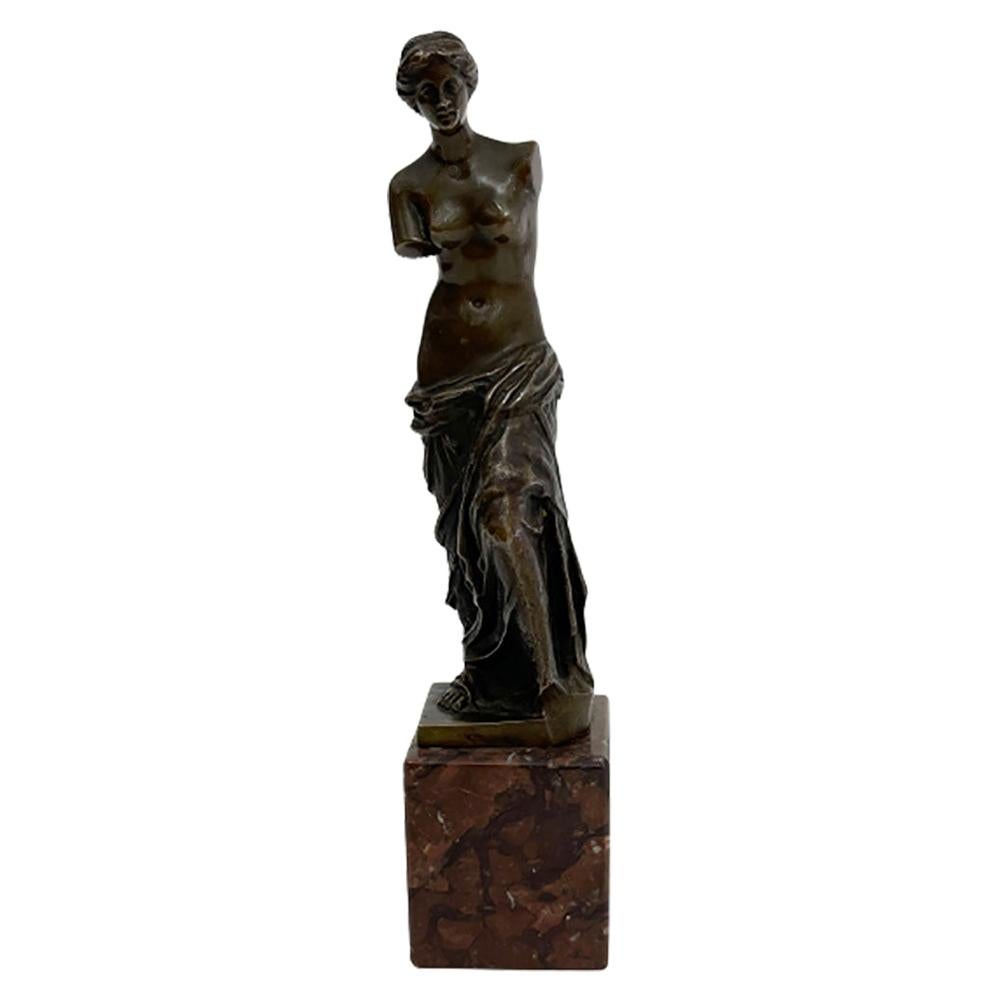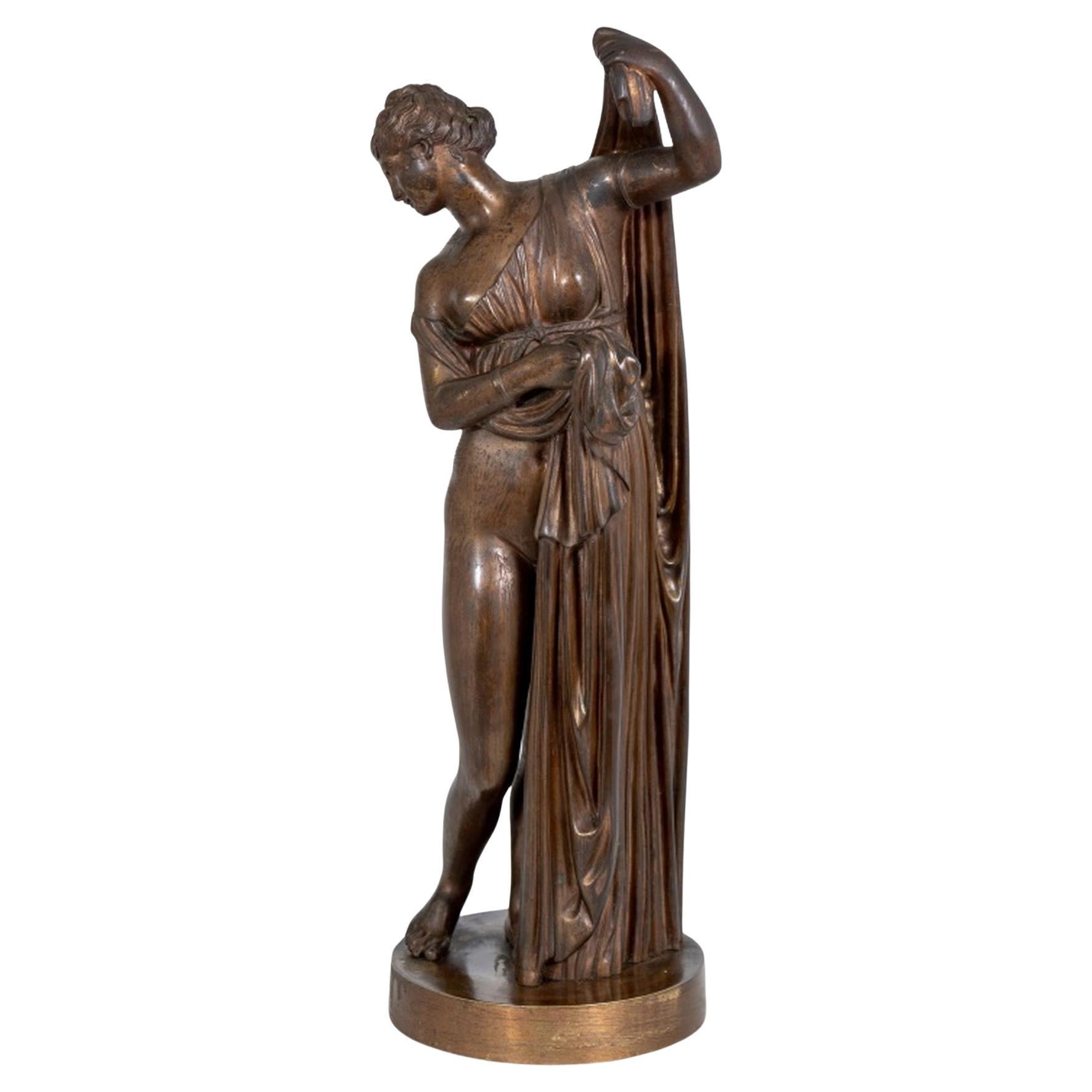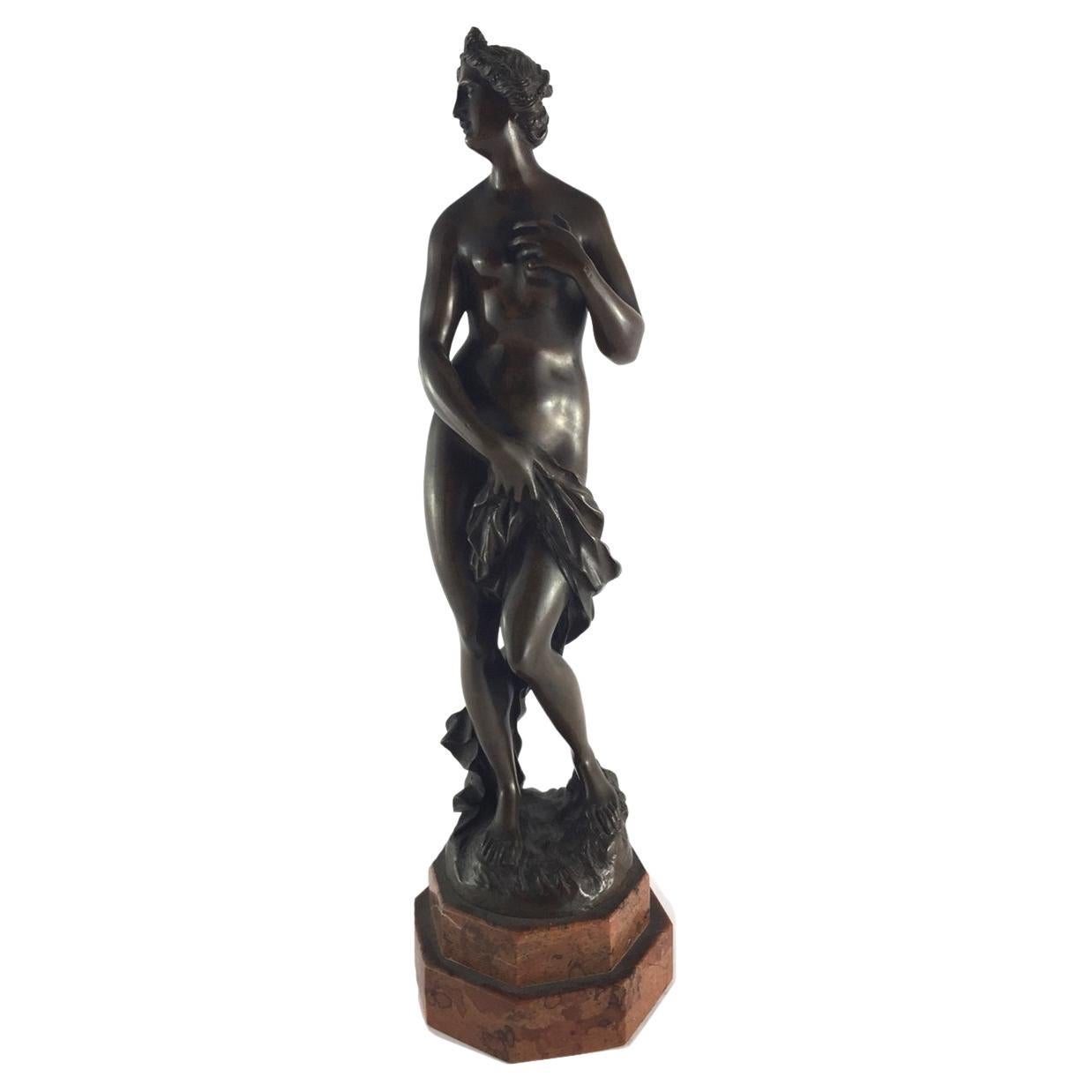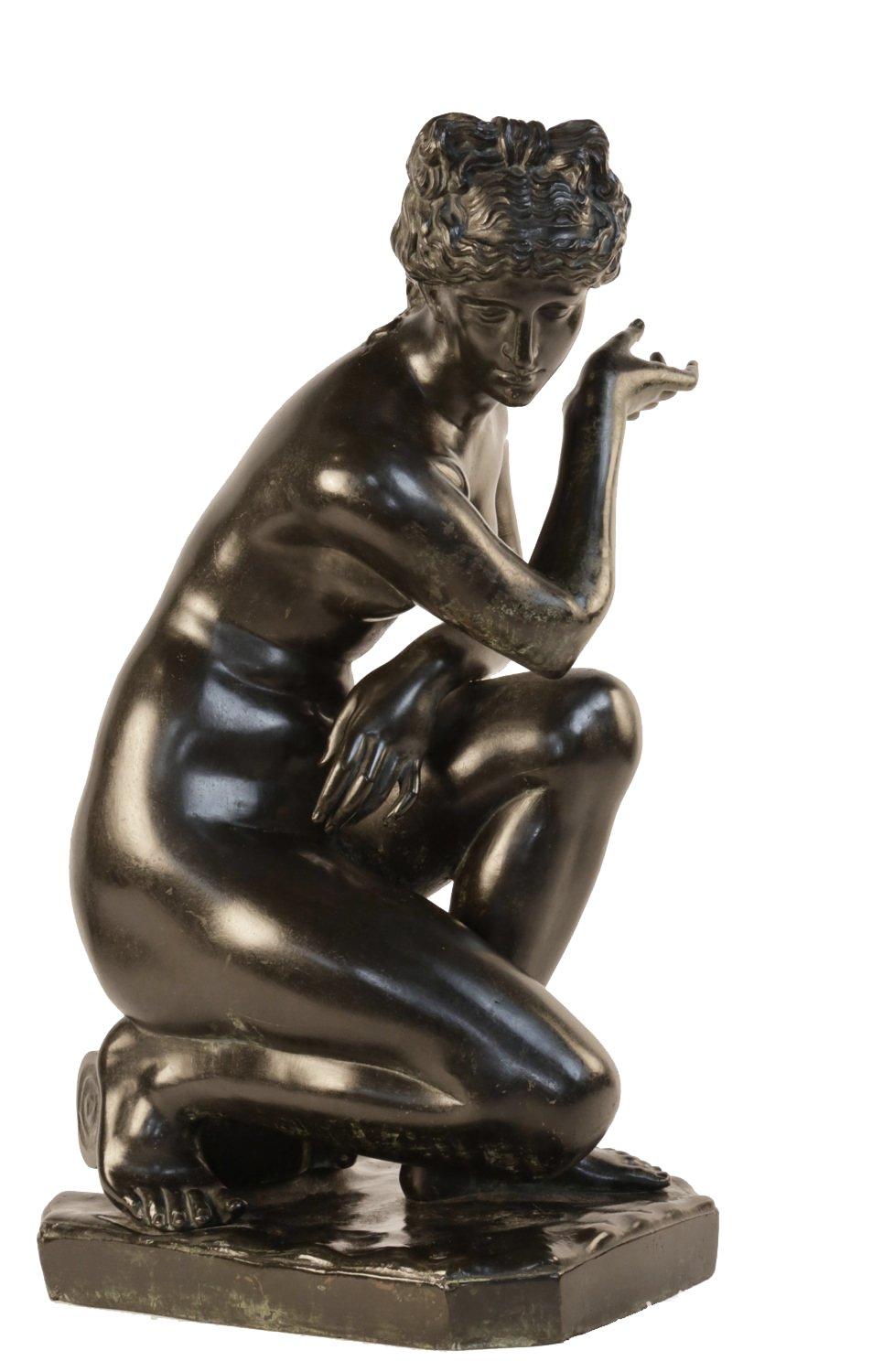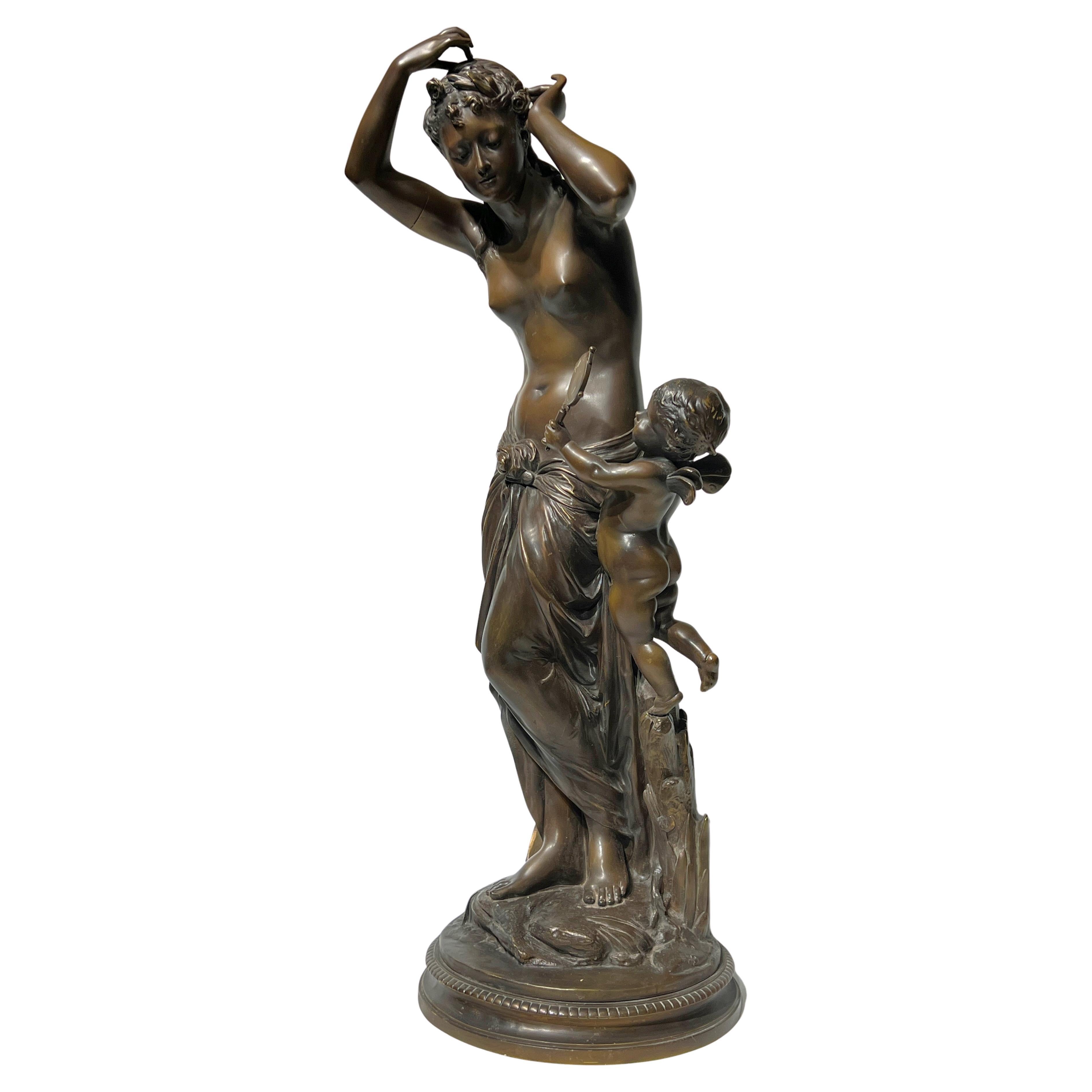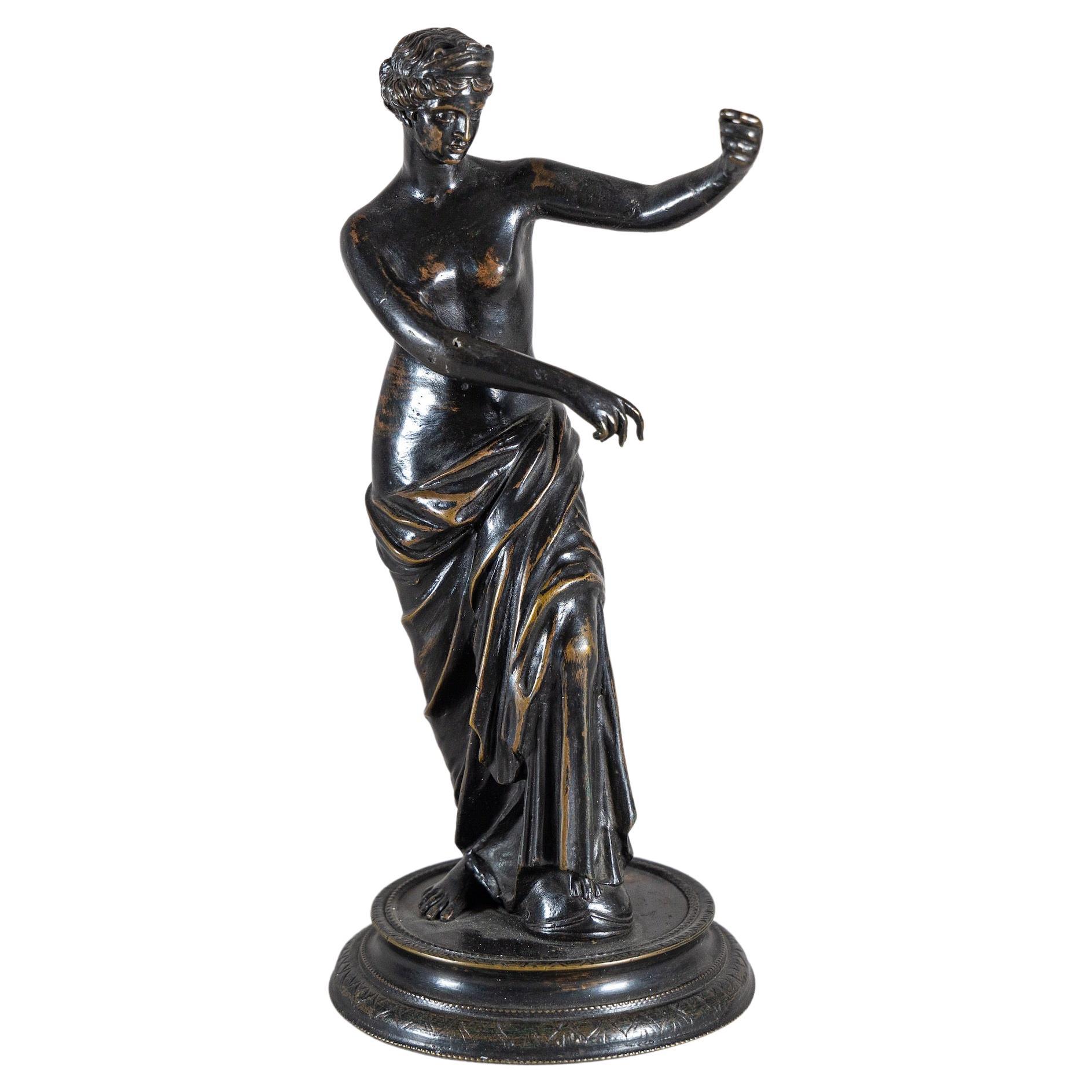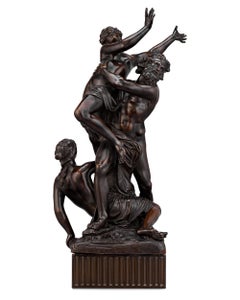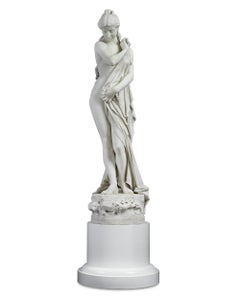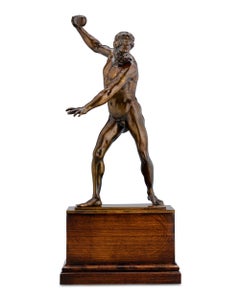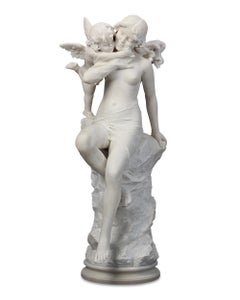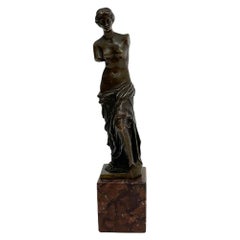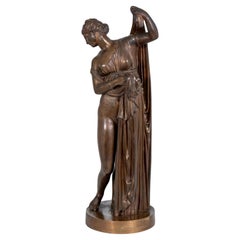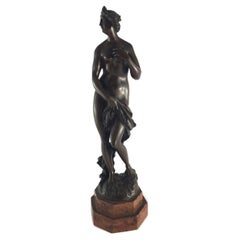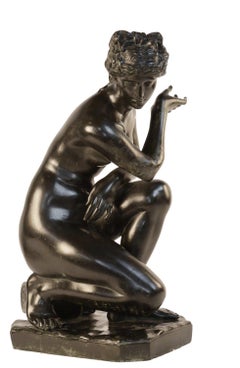Items Similar to Bronze of Amphitrite after Michel Anguier
Want more images or videos?
Request additional images or videos from the seller
1 of 7
Bronze of Amphitrite after Michel Anguier17th Century
17th Century
$78,500
£59,755.76
€68,883.50
CA$111,793.57
A$121,930.28
CHF 64,105.96
MX$1,474,954.42
NOK 799,962.40
SEK 755,888.42
DKK 514,267.03
About the Item
After Michel Anguier
French 1612-1686
Amphitrite
Bronze
This remarkable bronze masterpiece was cast after a High Baroque masterwork by French sculptor Michel Anguier. After training under the famed masters Gian Lorenzo Bernini and Alessandro Algardi, Anguier developed a unique style that incorporated the theatricality of Bernini’s period-defining sculpture, balanced by Algardi’s somber realism. This bronze of Amphitrite, wife of Poseidon, comes from the sculptor's celebrated series depicting six gods and goddesses.
Anguier's sculptures brought heightened emotion to the legendary myths of ancient Greece. The sculptor imbued his representation of Amphitrite with tranquility — a perfect fit for the goddess of the sea. Her pose and delicately draped fabrics emphasize her feminine form. A lobster perches on her arm, and she is accompanied by a dolphin at her feet, Poseidon’s favored creature and an important figure in her myth.
The present work is cast in the same scale as the original mythological set conceived in 1652 by Anguier at a sizeable 26“ tall. The first recorded casting of this work is held in the Louvre in Paris, and a similar cast can be found at the Metropolitan Museum of Art in New York.
17th century
26" high by 7 1/8" wide by 7 1/8" deep
- Creation Year:17th Century
- Dimensions:Height: 26 in (66.04 cm)Width: 7.13 in (18.12 cm)Depth: 7.13 in (18.12 cm)
- Medium:
- Movement & Style:
- After:Michel Anguier (1612 - 1686, French)
- Period:
- Condition:
- Gallery Location:New Orleans, LA
- Reference Number:Seller: 31-60651stDibs: LU18616285852
About the Seller
5.0
Vetted Professional Seller
Every seller passes strict standards for authenticity and reliability
Established in 1912
1stDibs seller since 2013
19 sales on 1stDibs
Typical response time: 4 hours
- ShippingRetrieving quote...Shipping from: New Orleans, LA
- Return Policy
Authenticity Guarantee
In the unlikely event there’s an issue with an item’s authenticity, contact us within 1 year for a full refund. DetailsMoney-Back Guarantee
If your item is not as described, is damaged in transit, or does not arrive, contact us within 7 days for a full refund. Details24-Hour Cancellation
You have a 24-hour grace period in which to reconsider your purchase, with no questions asked.Vetted Professional Sellers
Our world-class sellers must adhere to strict standards for service and quality, maintaining the integrity of our listings.Price-Match Guarantee
If you find that a seller listed the same item for a lower price elsewhere, we’ll match it.Trusted Global Delivery
Our best-in-class carrier network provides specialized shipping options worldwide, including custom delivery.More From This Seller
View AllBronze of Pluto Abducting Proserpine after François Girardon
Located in New Orleans, LA
After François Girardon
1628-1715 French
Pluto Abducting Proserpine
Bronze
This High Baroque period composition captures the famed narrative of Pluto and Proserpine from Roman mythology. The late 17th-century patinated bronze, created after François Girardon's marble composition, captures the very moment that Pluto seizes Proserpine. The anguished goddess reaches skyward, attempting to escape the god’s grasp while Pluto’s stoic face betrays his knowledge that his ploy will succeed. This pivotal moment in the mythological tale has captured the imagination of many art historical greats, from Bernini to Rubens. François Girardon’s version of the climax demonstrates incredible finesse and artistry, modeled expertly in bronze in the present work by a later sculptor. The statue brings a twist of intertwined bodies into a dynamic frenzy, paralleling the tension of the legendary story.
In ancient Roman mythology, Proserpine, the beautiful daughter of Ceres — known as Persephone in Greek mythology — was picking flowers in the fields when she was suddenly abducted by Pluto, the god of the underworld, and taken to his kingdom. Consumed with grief, her mother Ceres, the goddess of agriculture, scorches the earth, stopping the growth of grain and fruit. Jupiter attempts to intervene and secure Proserpine’s return to earth, negotiating a compromise with Pluto and the Fates that allows Proserpine to be released for part of the year before returning to Pluto’s underworld. Proserpine’s journey back and forth is an allegory for the changing seasons; when Prosperine is with her mother, the earth warms and provides bountiful harvests. Upon her annual return to the underworld, however, the earth once again becomes cold and barren.
After returning to France after years of training in Rome, François Girardon quickly rose to become one of the greatest artists in France. He was elected a member of the Académie Royale de Peinture et de Sculpture in 1657 and would become Chancellor of the Royal Academy in 1695. The artist was approached frequently for royal commissions and Girardon’s Pluto was originally commissioned by Louis XIV for the gardens at his Palace of Versailles. It was one of four monumental marble groups intended to decorate the corners of Charles Le Brun’s never completed garden at the chateau, the Parterre d’Eau. Each group of three figures symbolized one of the four elements: earth, air, fire and water. Pluto’s association with hell made him the apt...
Category
Early 18th Century Baroque Figurative Sculptures
Materials
Bronze
La Casta Susanna by Urbano Lucchesi
Located in New Orleans, LA
Urbano Lucchesi
1844 - 1906 Italian
La Casta Susanna
(The Chaste Susanna)
Marble
This elegant statue entitled La Casta Susanna depicts the virtuous biblical figure Susanna, exper...
Category
Late 19th Century Nude Sculptures
Materials
Marble
Labors of Hercules Bronze Sculpture, 17th Century
Located in New Orleans, LA
A rare example of late Renaissance sculpture, this impressive Italian bronze captures one of the greatest divine heroes of myth and legend: Hercules. The figure is rendered with stun...
Category
17th Century Baroque Nude Sculptures
Materials
Bronze
Italian Marble Sculpture Of Venus And Cupid
Located in New Orleans, LA
Beautifully detailed and lifelike, Venus and Cupid share a soft embrace in this remarkable Italian white marble sculpture. The feminine beauty gracefully leans against roughened rock...
Category
19th Century Nude Sculptures
Materials
Marble
Nessus and Deianira Bronze
By Giambologna
Located in New Orleans, LA
A technical and creative masterpiece of the late Renaissance era, this extraordinary bronze figure depicts the famed Greek legend of The Abduction of Deianira. Bringing together the ...
Category
17th Century Renaissance Figurative Sculptures
Materials
Bronze
The Night
Located in New Orleans, LA
After James Pradier
1792–1852 French
The Night
White marble on a grey marble socle
Drifting in a dreamlike ascent, this exquisite allegorical sculpture, The Night, pays tribute t...
Category
20th Century Nude Sculptures
Materials
Marble
$168,500
You May Also Like
Small Bronze Statue of Venus De Milo
Located in Delft, NL
A small bronze statue of Venus de Milo
A small French bronze statue of Venus de Milo or Aphrodite on a marble base.
The original Venus de Milo statue...
Category
Antique Late 19th Century French Figurative Sculptures
Materials
Marble, Bronze
Italian "Bathing Venus" Patinated Bronze Sculpture
Located in Astoria, NY
Italian School, The Bathing Venus, Patinated Bronze Sculpture, late 19th century, cast by Fonderi Nelli Roma, the standing figure removing her elaborate robe on a circular base, stam...
Category
Antique Late 19th Century Italian Neoclassical Figurative Sculptures
Materials
Bronze
19th Century Bronze Scuplture "Venus Bather" by H.S. München
By H.S. Munchen
Located in Firenze, FI
Lost wax cast Italian bronze sculpture, the subject reproduces 'Venus bather'. The base is made of Bardiglio red marble. Italian manufacture, early 19th century. Made by H.S. München...
Category
Antique Early 19th Century Italian Empire Figurative Sculptures
Materials
Bronze
19th Century Bronze Figure of Crouching Venus or Naked Aphrodite
Located in Beachwood, OH
19th Century Bronze Figure of Crouching Venus or Naked Aphrodite
Bronze with dark patination
22.5 x 13 x 11 inches
The Crouching Venus is a Hellenisti...
Category
19th Century Figurative Sculptures
Materials
Bronze
Venus and Cupid Bronze Sculpture After Jean Louis Gregoire (1840-1890)
By Jean Louis Grégoire
Located in New York, NY
Antique (late 19th century) bronze sculpture of Venus adoring herself in a mirror held by Cupid, after the original model by Jean Louis Gregoire (1840-1890), is finely cast with a w...
Category
Antique Late 19th Century French Neoclassical Figurative Sculptures
Materials
Bronze
Bronze Statuette of Venus, 2nd Half 19th Century
Located in Greding, DE
Small dark patinated figure of Venus on round profiled plinth.
Category
Antique Mid-19th Century European Grand Tour Figurative Sculptures
Materials
Bronze
More Ways To Browse
Antique Bronze Nude
Lobster Antique
Michel Bronze
Bronze Sculpture 17th Century
Bernini Sculpture
Shantell Martin
Sheep Cow Painting
Sidney Thomas Cooper Painting Of Cows
Soccer Poster
Storm Trooper
Submarine Painting
Tintin Original
Tyrone Power
Vintage Air Canada Posters
Vintage Aperitif Posters
Vintage Bardot Dress
Vintage Caboose
Vintage Channel Poster
